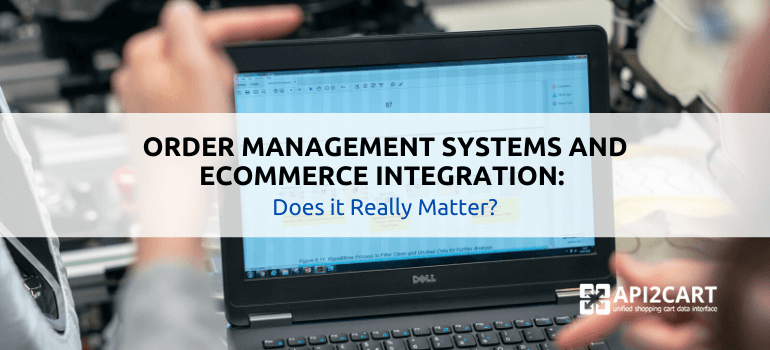
Starting an online business has become so accessible these days, both financially and technically, that the number of e-stores is growing by leaps and bounds. Certainly, not every one of the newly established shops can withstand the competition, and in many cases, the first year becomes the last. For many e-shops, however, it becomes a trampoline to greater sales volumes by expanding the business through selling on new channels and opening new stores.
Wonderful as it sounds, there are a number of established business processes to reorganize before one can count the grown revenue. The most typical challenge many e-retailers face is managing the increased number of orders from multiple sales channels. Fortunately, vendors of various order management solutions have already addressed this problem by creating systems that automate routine tasks.
Due to the highly competitive market, one of the most important criteria when selecting an order management system is the range of integrations the software supports. Besides the main need to work well with multiple shopping carts, this software should also be able to integrate with shipping, accounting, warehouse management systems, marketplaces like Amazon or eBay, etc.
Why Order Management Systems Benefit from eCommerce Integrations
To get a deeper insight into why integrations with various e-Сommerce solutions are of great importance for order management systems, it is important to see how all of them "work together" within an online store.
Let's look at the whole cycle of the sale to understand the working principle:
- First, a customer visits an online store or a sales channel like Amazon and adds an item to the shopping cart. Through integration with various shopping carts and online marketplaces, the order is automatically transferred to the order management platform. Even if the purchase is not completed, this data helps analyze abandoned carts and their "content" to further reduce their number.
- Then, once the order is confirmed and paid for, the platform sends the data to the inventory management and accounting software to update inventory levels and process payment.
- The final stage is the automated creation of the shipping labels thanks to the shipping system integration and sending the order to the fulfillment center.
Now it is clear that an order management platform serves as a coordinator of all activities within an online store and works together with all other e-Сommerce services. The more integrations it supports, the smoother the shop will function. For online retailers, this means that they will have to spend less time on the technical side of the shop and can focus on business development instead.
Recognizing this, order management platforms compete in the number of integrations. Some vendors even build accounting or inventory functionality into their solutions, although sometimes this overlaps with the systems a retailer already uses.
Why Users Care About Shopping Cart Integrations
According to e-retailers, the order management system that plays well with their online store and other sales channels has a number of benefits. The most important of which is better inventory visibility. The system, which informs its user of items added to the shopping cart, shows the most popular products and allows a seller to replenish inventory in advance.
In addition, integration with shopping carts reportedly increases the speed of order processing and delivery while reducing the number of errors and time spent on these tasks. It is clear that the lack of order platform integration would mean the need to manually process orders and enter data into other eCommerce systems involved in the process.
It would be a mistake to think that only order management platforms can integrate with the other eCommerce solutions. Rather, all these services can also be integrated with each other to improve eCommerce performance.
An example would be a shopping cart integration with a shipping system, which lets store clients see the shipping rates right at the checkout. In turn, this helps check whether it’s the shipping costs that prevent visitors from converting into customers. For example, by lowering the shipping rates and comparing the cart abandonment data before and after the change.
Difficulties with Developing Integrations for Order Management Systems
As mentioned earlier, an order management system needs to have at least 7 integrations to compete with the biggest players in the order management arena. This may sound simple, but developing each integration requires a lot of effort and time to make it a reality. Each service has its own way of working and there is almost no possibility to use some ready-made "parts" from the previous integrations.
Even when the integration is complete, that's not the end of the story. It requires further upgrades and maintenance, which will continually take up time and resources due to the need for IT staff support.
Adding support of multiple shopping carts looks no easier, but if you’re using the right tools, it could be. API2Cart has already done the work for you. It provides the way of integrating your order management software with 60+ most popular shopping platforms via its unified API. This saves you months of work and significant financial resources and frees you up to work on other important integrations.
API2Cart enables you to get and manage such data as orders, products, categories, shipments, and customers. It offers a well-documented API and full technical support. Besides, you will get a secure data interaction, as the service uses an SSL certificate and a 32-symbol API key to access the system.
So, if you’re determined to extend your software clientele and soon outgrow your competitors, API2Cart is worth trying. To discuss the aspects of your integration, leave us a message or schedule a call with our representative. See how our API works by creating a trial account and testing it on a live store.



